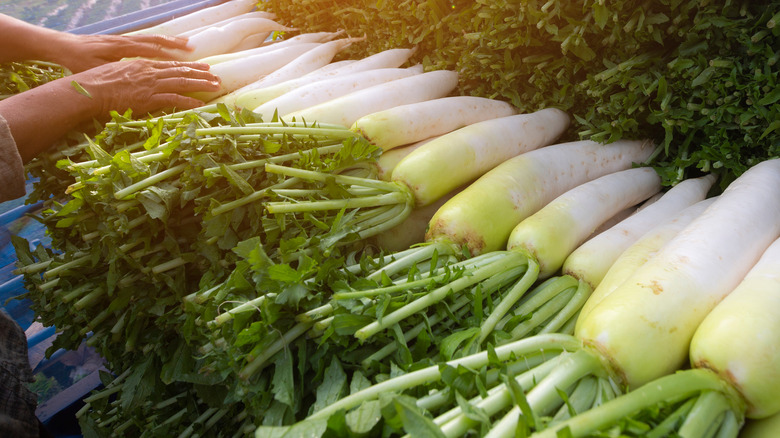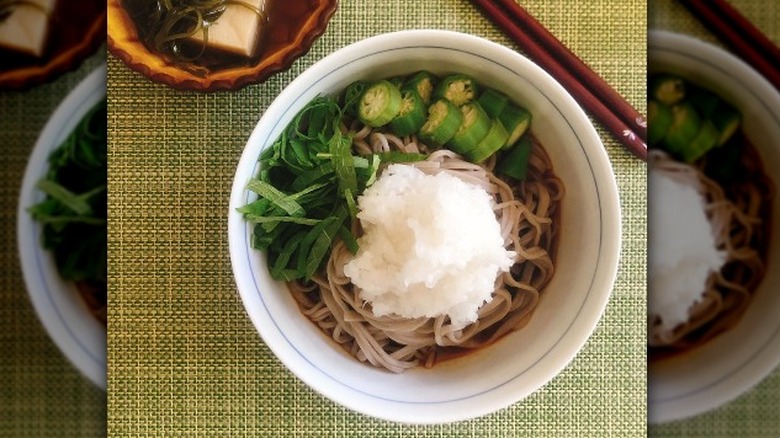Why Daikon Is So Popular In Japanese Cuisine
You may be familiar with ramen and sushi, however, there is one vegetable that is indispensable to many Japanese dishes that doesn't get much representation outside of the island nation: daikon. According to the Tokyo Foundation for Policy Research, Japan produces and consumes 90% of the world's daikon, and according to the country's Ministry of Health, Labor, and Welfare, it's the preferred vegetable for most Japanese residents (per Japan Times). Daikon is a winter radish though, according to The Konnichiwa, it has little in common with the small red radishes we are most familiar with. It's a long, white root vegetable that more closely resembles a massive pale carrot than a tiny red radish. The flavor of this veggie is rather mild, though it can change depending on how it's prepared.
Harrowsmith Magazine cites historical documents and artifacts showing that daikon originated in the Mediterranean and the Black Sea regions. The pale white vegetable then made its way to Japan around A.D. 700. The Tokyo Foundation for Policy Research notes that it would take centuries for the vegetable to catch on, but by the Edo Period (1603-1868) daikon would be popular throughout Japan. It has since become such a staple that it reportedly saved the people of Edo, which is modern-day Tokyo, from multiple famines throughout history.
Daikon is loved for its versatility and flavor
So why is it that the Daikon is so popular in Japan? According to Japan Times, daikon has earned a special space in Japanese cuisine because it is available throughout the year, and is so versatile that it could go with everything. The green leaves and white flesh can both be enjoyed in a variety of ways to change the subtle, but complex flavors of many dishes. It can be enjoyed pickled with turmeric, grated into oily fish soups and stews, sliced fresh into a salad, grilled as Aisoon skewers, or enjoyed with homemade ponzu sauce.
Japan Guide notes that daikon's versatility is also aided by its transforming flavor notes. When eaten raw, the bottom half of the daikon especially can taste quite spicy like its cousins mustard and horseradish (via Nature Word). When cooked down though, the flavor mellows more and the rich sweetness is able to shine through. Daikon is so versatile that Masanori Kono uses it to make adorable and edible sculptures, as shared by My Modern Met.
Daikon is also incredibly nutritious. Healthline notes that its nutrient profile is extremely impressive for such a low-calorie vegetable, and is highest in folate, vitamin C, and antioxidants. Being low in starches and calories while remaining high in fiber makes it well suited for weight management as well.

